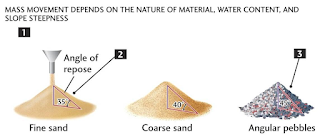ANTIOXIDANTS: In Pharmaceutical Formulation
- Chemically they are reducing agents.
- They oxidize themselves and prevent oxidation of API.
- A substance that inhibits oxidation is called antioxidants.
- The effectiveness of antioxidant can depend on the concentration used and pH of solution.
- Examples:
- Ascorbic acid,
- butylated hydroxy anisole (BHA),
- butylated hydroxyl toluene (BHT)
- Oxidation is a chemical reaction involving the loss of electrons or an increase in oxidation state.
- Oxidation reactions can produce free radicals. In turn, these radicals can start chain reactions.
- When the chain reaction occurs in a cell, it can cause damage or death to the cell.
- Antioxidants terminate these chain reactions by removing free radical intermediates, and inhibit other oxidation reactions.
- The following are some of the qualities of an ideal anti-oxidant:
- It should be readily soluble or dispersible in the medium.
- It should be effective in low concentration.
- It should be non-toxic.
- It should be non-irritant.
- It should be compatible with other ingredients of emulsion.
- It should be colorless, odorless and tasteless.

- On the basis of the source antioxidants are 2 types. They are,
- Natural antioxidants:
- Tocopherol (Vitamin E),
- Sesamol,
- Guaiac resin,
- Mehionine.
- Synthetic antioxidant:
- BHA,
- BHT,
- Tertiary butyl hydroquinone.
- On the basis of solubility antioxidants are 2 types. They are,
- Water soluble antioxidant:
- Citric Acid,
- Tartaric Acid,
- Phosphoric Acid,
- Ascorbic Acid,
- Sodium Metabisulfite and
- thiol derivatives.
- Oil soluble antioxidant:
- BHA
- BHT
Brief Detail of Some Antioxidant:
- Butylated Hydroxy Anisole (BHA)
- Description: White or slightly yellow. Waxy solid having a faint characteristic odor.
- Solubility: Insoluble in water; 1 g in 4 mL alcohol, 2 mL chloroform or 1.2 mL ether.
- Uses: An antioxidant in cosmetics and pharmaceuticals containing fat and oils.
- Butylated Hydroxyl Toluene (BHT)
- Description: White, tasteless crystal with a mild odor; stable in light or air; melts at 70'C.
- Thermolabile substance and has low toxicity.
- Solubility: Insoluble in water; 1 g in 4 mL alcohol, 1.1 mL chloroform or 1.1 mL ether.
- Uses: An antioxidant employed to retard oxidative degradation of oils and fats in various cosmetics and pharmaceuticals.
- Tocopherol:
- Natural antioxidant.
- Present in vegetable oil in concentration range of 0.1% to 0.01%
- Potassium Metabisulfite
- Description: White crystals or crystalline powder with an odor of SO2. Oxidizes in air to the sulfate. May ignite on powdering in a mortar if too much heat develops.
- Solubility-Freely soluble in water; insoluble in "alcohol.
- Uses: Antioxidant.
- Sodium Bisulfite:
- Description: White or yellowish white crystals or granular powder with the odor of sulfur dioxide; unstable in air.
- Solubility: 1g in 4 mL water; slightly soluble in alcohol.
- Uses-An antioxidant und stabilizing agent. Help to solubilize kidney stones.
- Sodium Metabisulfite:
- Description: White crystals or white to yellowish crystalline powder with an odor of sulfur dioxide; on exposure to air and moisture, it is slowly oxidized to sulfate.
- Solubility: 1 gm 2 mL water; "lightly soluble in alcohol; freely .soluble in glycerin.
- Uses: A reducing agent. It is used in easily oxidized pharmaceuticals. Such as epinephrine hydrochloride and phenylephrine hydrochloride injections, to retard oxidation.



nice
ReplyDeleteThe blog post explains that antioxidants in pharmaceutical formulations help prevent oxidation and protect drug stability. It categorizes them as natural (like tocopherol) or synthetic (like BHA, BHT), and as water- or oil-soluble. It also highlights that ideal antioxidants should be effective, non-toxic, and compatible with other ingredients.
ReplyDeletePlug Valve Manufacturer in India